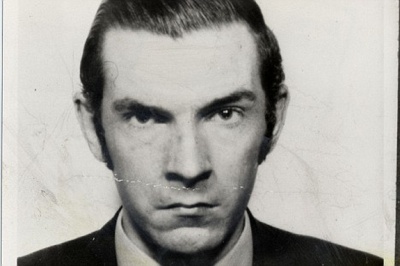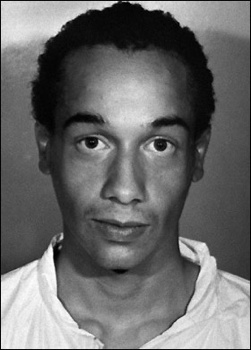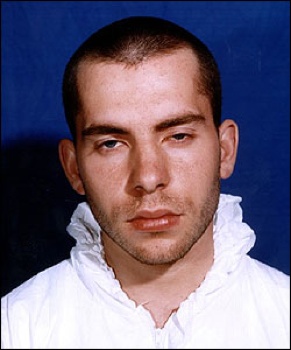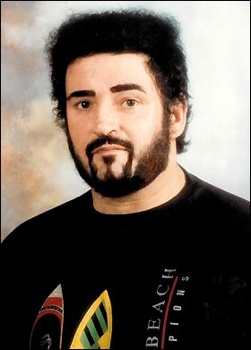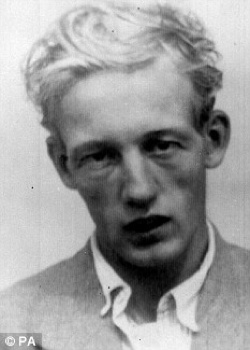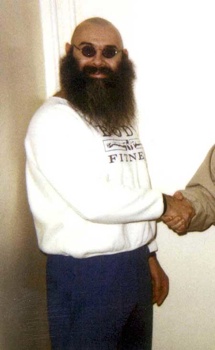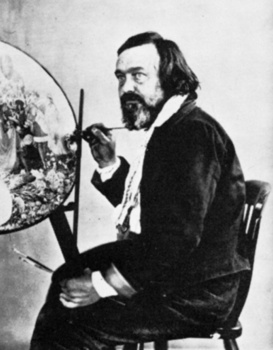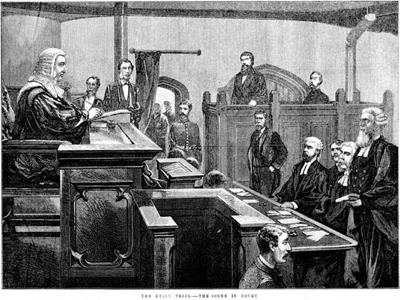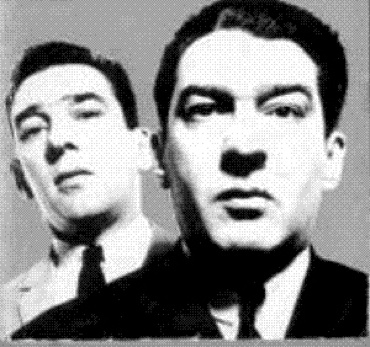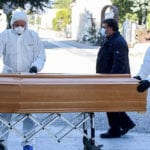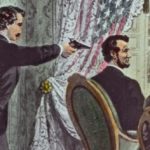 Music
Music  Music
Music  History
History 10 Less Than Jolly Events That Occurred on December 25
 Weird Stuff
Weird Stuff 10 Funny Ways That Researchers Overthink Christmas
 Politics
Politics 10 Political Scandals That Sent Crowds Into the Streets
 Weird Stuff
Weird Stuff Ten Bizarre Facts About The Doge Meme
 Our World
Our World 10 Ways Your Christmas Tree Is More Lit Than You Think
 Movies and TV
Movies and TV The 10 Coolest Stars to Set Sail on The Love Boat
 History
History 10 Things You Didn’t Know About the American National Anthem
 Technology
Technology Top 10 Everyday Tech Buzzwords That Hide a Darker Past
 Humans
Humans 10 Everyday Human Behaviors That Are Actually Survival Instincts
 Music
Music 10 Surprising Origin Stories of Your Favorite Holiday Songs
 History
History 10 Less Than Jolly Events That Occurred on December 25
 Weird Stuff
Weird Stuff 10 Funny Ways That Researchers Overthink Christmas
Who's Behind Listverse?

Jamie Frater
Head Editor
Jamie founded Listverse due to an insatiable desire to share fascinating, obscure, and bizarre facts. He has been a guest speaker on numerous national radio and television stations and is a five time published author.
More About Us Politics
Politics 10 Political Scandals That Sent Crowds Into the Streets
 Weird Stuff
Weird Stuff Ten Bizarre Facts About The Doge Meme
 Our World
Our World 10 Ways Your Christmas Tree Is More Lit Than You Think
 Movies and TV
Movies and TV The 10 Coolest Stars to Set Sail on The Love Boat
 History
History 10 Things You Didn’t Know About the American National Anthem
 Technology
Technology Top 10 Everyday Tech Buzzwords That Hide a Darker Past
 Humans
Humans 10 Everyday Human Behaviors That Are Actually Survival Instincts
Top 10 Notable Residents of Broadmoor Hospital
Broadmoor Hospital is a high-security psychiatric hospital at Crowthorne in the Borough of Bracknell Forest in Berkshire, England. It is the best known of the three high-security psychiatric hospitals in England—the other two being Ashworth and Rampton. The hospital was built in 1863 to a design by Sir Joshua Jebb and covers 210,000 square meters (53 acres) within its secure perimeter. After the escape of John Straffen (see below) in 1952, who murdered a local child, the hospital set up an alarm system. Since its inception, the hospital has seen some prolific inmates, and this list describes 10 of its most famous tenants.
Note: If you’re just interested in Charles Bronson, we’ve got an entire list dedicated to the most insane prisoner in England.
10 Peter Bryan
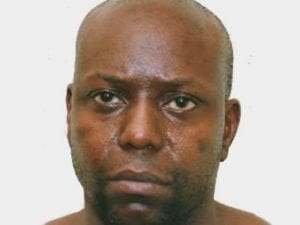
Peter Bryan is one of London’s most notorious cannibals. In February 2004, police forced their way into a flat in Walthamstow to find Bryan standing in the hallway covered in blood. The dismembered body of Brian Cherry was on the carpet in the living room, and a small amount of meat was frying in a pan on the stove. He later told the police, “I ate his brain with butter; it was really nice.” However, this was not Bryan’s only murder—he had killed before and would kill again.
A violent altercation with a neighbor at age 18 in which the police were called was a warning sign of bad things to come. In 1993, he was fired from his job after he was caught stealing. He later returned to the shop with a claw hammer and killed 20-year-old Nisha Sheth, daughter of the owner, in front of her younger brother. He served time for that crime in a psychiatric facility, but eventually, he was deemed well enough to be released. That night, he killed Brian Cherry.
Bryan admitted that if he had not been stopped that night, he would have killed again, claiming that he “wanted their souls.” He was sent to Broadmoor, but his murdering days were not over. In April 2004, he attacked Richard Loudwell, a fellow inmate, in the dining room of Broadmoor Hospital. Bryan said after the attack, “I wanted to kill him and then eat him. I didn’t have much time. If I did, I’d have tried to cook him and eat him.” He will spend the rest of his life in Broadmoor under tighter security.
9 Graham Young
Graham Frederick Young is notable for his obsession with the use of poison and for having been imprisoned for murder in his teens, only to kill again after his release. Born in Neasden, North London, he was fascinated by poisons and their effects from a young age. In 1961 at 14, he started to test poisons on his family, enough to make them violently ill. He amassed large quantities of antimony and digitalis by repeatedly buying small amounts, lying about his age, and claiming they were for science experiments at school.
In 1962, Young’s stepmother Molly died from poison. He had been poisoning his father, sister, and a school friend. Young’s aunt, Winnie, who knew of his fascination with chemistry and poisons, became suspicious. He might have escaped suspicion as he suffered the same nausea and sicknesses as his family; however, he sometimes forgot which foods he had laced. He was sent to a psychiatrist, who recommended contacting the police. Young was arrested on May 23, 1962. He confessed to the attempted murders of his father, sister, and friend. The remains of his stepmother could not be analyzed because she had been cremated.
Young was sentenced to 15 years in Broadmoor but was released after nine years, having been deemed “fully recovered.” After his release from the hospital in 1971, he began work as a storekeeper at John Hadland Laboratories, which manufactured thallium bromide-iodide infrared lenses used in military equipment. Soon after he began work, his foreman, Bob Egle, grew ill and died. Young had been making tea laced with poisons for his colleagues. A sickness swept through his workplace and, mistaken for a virus, was nicknamed the Bovingdon Bug. These cases of nausea and illness, sometimes severe enough to require hospitalization, were later attributed to Young and his tea. Young poisoned about 70 people during the next few months, although none fatally.
Dubbed the Teacup Poisoner, Young died in prison in 1990. He is the subject of an extremely good film called The Young Poisoner’s Handbook.
8 Kenneth Erskine
Kenneth Erskine is an English serial killer who became known as the Stockwell Strangler. In 1986, Erskine murdered seven elderly people, breaking into their homes and strangling them; in addition, some were sexually assaulted. The crimes took place in London. A homeless drifter and solvent abuser, Erskine was 24 years old when he committed the crimes but had the mental age of a 12-year-old. Police suspected Erskine of four other murders, but Erskine has never been charged with any of these murders.
Erskine was sentenced to life imprisonment with a recommended minimum term of 40 years but has since been diagnosed with a mental disorder within the scope of the Mental Health Act 1983 and is therefore now held at Broadmoor. He is unlikely to be freed until at least 2028 at the age of 66. Some 20 years later, the trial judge’s recommendation is still one of the heaviest ever handed out in British legal history.
In February 1996, Erskine was again in the news, this time for preventing the possible murder of Peter Sutcliffe (see below), by raising the alarm as a fellow inmate, Paul Wilson, attempted to strangle Sutcliffe with the flex from a pair of stereo headphones.
7 David Copeland
David John Copeland is a former member of the British National Party and the National Socialist Movement. He became known as the “London Nail Bomber” after a 13-day bombing campaign in April 1999 aimed at London’s black, Bangladeshi, and gay communities. The bombs killed three, including a pregnant woman, and injured 129, four of whom lost limbs. No warnings were given.
After his arrest, he told psychiatrists that he had started having sadistic dreams when he was about 12, including dreams or fantasies that he had been reincarnated as an SS officer with access to women as slaves. Copeland wrote to BBC correspondent Graeme McLagan, denying that he had schizophrenia and telling McLagan that the “ZOG,” or Zionist Occupation Government, was pumping him full of drugs to sweep him under the carpet. He wrote, “I bomb the blacks, Pakis, degenerates. I would have bombed the Jews as well if I’d got a chance.” When asked by police why he had targeted ethnic minorities, he replied: “Because I don’t like them, I want them out of this country, I believe in the master race.”
Although five psychiatrists diagnosed Copeland as having paranoid schizophrenia, and a consultant concluded he had a personality disorder, his plea of diminished responsibility was not accepted by the prosecution, which was under pressure not to concede to his pleas of guilty to manslaughter. He was convicted of murder on June 30, 2000, and given six concurrent life sentences.
6 Peter Sutcliffe
Peter William Sutcliffe was an English serial killer who was dubbed The Yorkshire Ripper. Sutcliffe was convicted in 1981 of murdering 13 women and attacking several others. Reportedly a loner at school, he left at the age of 15 and took a series of menial jobs, including two stints as a gravedigger during the 1960s. He frequented prostitutes as a young man, and it has been speculated that a bad experience with one (during which he was allegedly conned out of money) helped fuel his violent hatred against women.
In 1981, Sutcliffe was stopped by the police with a 24-year-old prostitute. A police check revealed the car was fitted with false number plates, and Sutcliffe was arrested for this offense and transferred to Dewsbury Police Station, West Yorkshire. At Dewsbury, he was questioned about the Yorkshire Ripper case as he matched so many of the physical characteristics known. The next day police returned to the scene of the arrest and discovered a knife, hammer, and rope he discarded when he briefly slipped away from police during the arrest. After two days of intensive questioning, on the afternoon of January 4, 1981, Sutcliffe suddenly declared he was the Ripper. Over the next day, Sutcliffe calmly described his many attacks. Weeks later, he claimed God told him to murder the women. He displayed emotion only when telling of the murder of his youngest victim, Jayne MacDonald.
At his trial, Sutcliffe pleaded not guilty to 13 counts of murder but guilty to manslaughter on the grounds of diminished responsibility. The basis of this defense was his claim that he was the tool of God’s will. Sutcliffe first claimed to have heard voices while working as a gravedigger that ultimately ordered him to kill prostitutes. He claimed that the voices originated from a headstone of a deceased Polish man, Bronislaw Zapolski, and that the voices were that of God.
In the years of Sutcliffe’s incarceration, there have been numerous attempts on his life from other inmates. The first was during his stay at HMP Parkhurst when James Costello, a 35-year-old career criminal from Glasgow, plunged a broken coffee jar twice into the left side of Sutcliffe’s face. Whilst at Broadmoor, he was subject to attempted strangulation (thwarted by Kenneth Erskine, above) and lost the vision in his left eye after being attacked with a pen. Sutcliffe died in November 2020 while in prison.
5 John Straffen
John Thomas Straffen was a British serial killer who was the longest-serving prisoner in British legal history. Straffen killed two young girls in the summer of 1951. He was found to be unfit to enter a plea and was committed to Broadmoor; during a brief escape in 1952, he killed again. This time he was convicted of murder. Due to his mental state, his sentence was commuted to life imprisonment, and he remained in prison until his death more than 50 years later.
Aged 8, Straffen was referred to a Child Guidance Clinic for stealing and truancy. In 1939, he first came before a Juvenile Court judge for stealing a purse from a girl and was given two years probation. His probation officer found that Straffen did not understand the difference between right and wrong or the meaning of probation. The family lived in crowded lodgings at the time, and Straffen’s mother had no time to help, so the probation officer took the boy to a psychiatrist. As a result, Straffen was certified with a mental defect under the Mental Deficiency Act 1927. A report was compiled on him in 1940, which gave his I.Q. as 58 and placed his mental age at six. When Straffen was 14, he was strongly suspected of being responsible for strangling two prize geese owned by one of the officers of his school; however, no proof was found, and it was not noted on his records. At the age of 16, the school authorities undertook a review which found his I.Q. was 64 and his mental age 9 years 6 months and recommended his discharge.
In 1951, Straffen killed two young girls, for which he was sent to Broadmoor. In 1952, whilst cleaning some outbuildings, he escaped over a perimeter wall, and within 2 hours, had killed another young girl. It was this escape and subsequent murder that urged the government to install an alarm system. To this day, the alarm is tested every Monday at 10 am for two minutes and then sounded again to give the “all clear.” With speakers located in several locations around Surrey and Berkshire, the alarm can be heard for up to 15 miles in each direction from Broadmoor.
4 Charles Bronson
Charles “Charlie” Bronson (born Michael Gordon Peterson) is an English criminal often referred to in the British press as the “most violent prisoner in Britain.” Born in Luton, England, Michael often found his way into fights before he began a bare-knuckle boxing career in the East End of London. His promoter was not happy with his name and suggested he change it to Charles Bronson.
In 1974, he was imprisoned for a robbery and sentenced to seven years. While in prison, he began making a name for himself as a loose cannon, often fighting convicts and prison guards. These fights added years to his sentence. Regarded as a problem prisoner, he was moved 120 times throughout Her Majesty’s Prison Service and spent all but 4 years of his imprisoned life in solitary confinement. What was originally a seven-year term stretched out to a fourteen-year sentence that resulted in his first wife Irene, with whom he had a son, leaving him. He was released on October 30, 1988, but only spent 69 days free before being arrested again. Bronson has spent a total of just four months and nine days out of custody since 1974. Known as one of the hardest criminals in England, Bronson has written many books about his experiences and famous prisoners he has met throughout his internment.
Bronson has been involved in over a dozen hostage incidents, including taking hostages and staging a 47-hour rooftop protest at Broadmoor in 1983, causing £750,000 (nearly $1.5m) worth of damage. Bronson has spent time at all three of England’s high-security psychiatric hospitals.
3 Richard Dadd
Richard Dadd was an English painter of the Victorian era, noted for his depictions of fairies and other supernatural subjects, Orientalist scenes, and enigmatic genre scenes, rendered with obsessively minuscule detail. Most of the works for which he is best known were created while he was incarcerated in Broadmoor hospital.
In 1842, Sir Thomas Phillips, the former mayor of Newport, chose Dadd to accompany him as his draftsman on an expedition through Europe to Greece, Turkey, Palestine, and Egypt. In November of that year, they spent a grueling two weeks in Palestine, passing from Jerusalem to Jordan and returning across the Engaddi wilderness. Toward the end of December, while traveling up the Nile by boat, Dadd underwent a dramatic personality change, becoming delusional and increasingly violent, and believing himself to be under the influence of the Egyptian god Osiris. His condition was initially thought to be sunstroke.
On his return in the spring of 1843, he was diagnosed to be of unsound mind and was taken by his family to recuperate in the countryside village of Cobham, Kent. In August of that year, having become convinced that his father was the Devil in disguise, Dadd killed him with a knife and fled for France. En route to Paris, Dadd attempted to kill another tourist with a razor but was overpowered and was arrested by the police. Dadd confessed to the killing of his father and was returned to England, where he was committed to the criminal department of Bethlem psychiatric hospital (also known as Bedlam). Here and subsequently at the newly created Broadmoor, Dadd was cared for and encouraged to continue painting.
Dadd probably suffered from a form of paranoid schizophrenia. He appears to have been genetically predisposed to mental illness; two of his siblings were similarly afflicted, while a third had “a private attendant” for unknown reasons.
2 Daniel M’Naghten
Daniel M’Naghten (pronounced and sometimes spelled, McNaughton) was a Scottish woodturner who assassinated English civil servant Edward Drummond while suffering from paranoid delusions. Through his trial and its aftermath, he has given his name to the legal test of criminal insanity in England and other common law jurisdictions known as the M’Naghten Rules.
In 1840, M’Naghten sold his woodturning business and spent two years in London and Glasgow. Whilst in Glasgow in 1841, he complained to various people, including his father, the Glasgow commissioner of police, and an MP, that he was being persecuted by the Tories and followed by their spies. No one took him seriously, believing him to be deluded. In January 1843, M’Naghten was noticed acting suspiciously around Whitehall in London. On the afternoon of January 20th, the Prime Minister’s private secretary, civil servant Edward Drummond, was walking towards Downing Street from Charing Cross when M’Naghten approached him from behind, drew a pistol, and fired at point-blank range into his back. A police constable overpowered M’Naghten before he could fire a second pistol.
M’Naghten appeared at Bow Street Magistrates’ Court the morning after the assassination attempt. He made a brief statement in which he described how persecution by the Tories had driven him to act: “The Tories in my native city have compelled me to do this. They follow, persecute me wherever I go, and have entirely destroyed my peace of mind … It can be proved by evidence. That is all I have to say.”
1 Ronald Kray
Ronald Kray and his twin brother Reginald were the foremost perpetrators of organized crime in London’s East End during the 1950s and 1960s. Ronald, commonly referred to as Ron or Ronnie, suffered from paranoid schizophrenia. The Krays were involved in armed robberies, arson, protection rackets, and violent assaults, including torture and the murders of Jack “The Hat” McVitie and George Cornell. As West End nightclub owners, they mixed with prominent entertainers including Diana Dors, Frank Sinatra, Judy Garland, and politicians, which gave the Krays a veneer of respectability. In the 1960s, they became celebrities in their own right, being photographed by David Bailey and interviewed on television. The Kray twins became famous locally for their gang and the mayhem they caused. They narrowly avoided prison several times, and in early 1952, they were called up for National Service. They deserted several times, each time being recaptured.
It was during this period that Ron started to show the first signs of mental illness. He would refuse to eat, shave only one side of his face, and suffer wild mood swings, sitting still for hours before erupting into a violent frenzy. On one occasion, Ron climbed into the prison rafters and, according to one guard, refused to come down for some six hours despite brother Reggie’s pleas. It is not clear whether at this stage it was another prank to annoy their guards or if Ron had become unbalanced. Guards at the Canterbury military holding prison were convinced he was dangerously psychotic.
They were arrested in May 1968 and convicted in 1969 by a squad of detectives led by Detective Superintendent Leonard “Nipper” Read and were both sentenced to life imprisonment. Ronnie was eventually certified insane and lived the remainder of his life in Broadmoor, dying on March 17, 1995, of a massive heart attack, aged 61. His funeral on March 29, 1995, was a huge event with people lining the streets. Reggie was released from prison on compassionate grounds in August 2000, a few weeks before his death from cancer.
